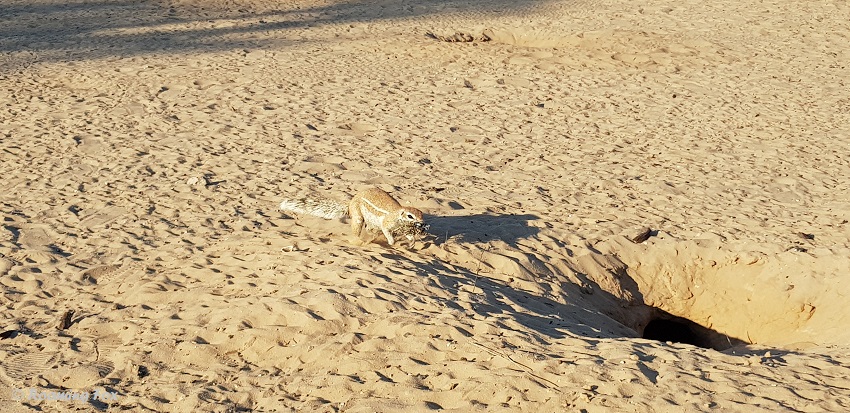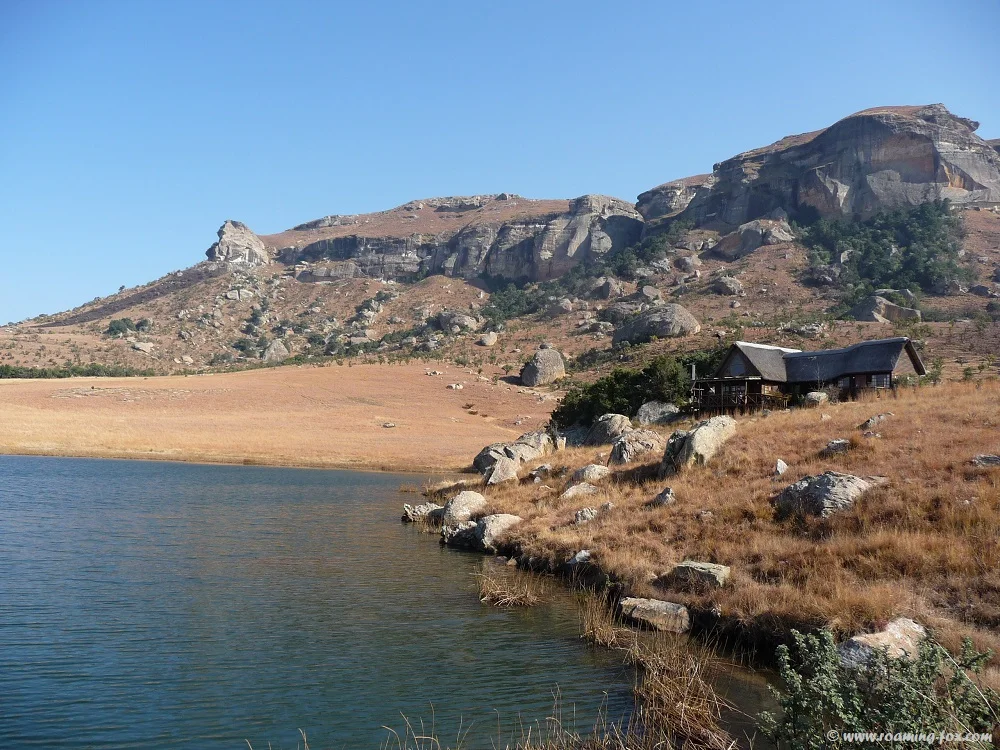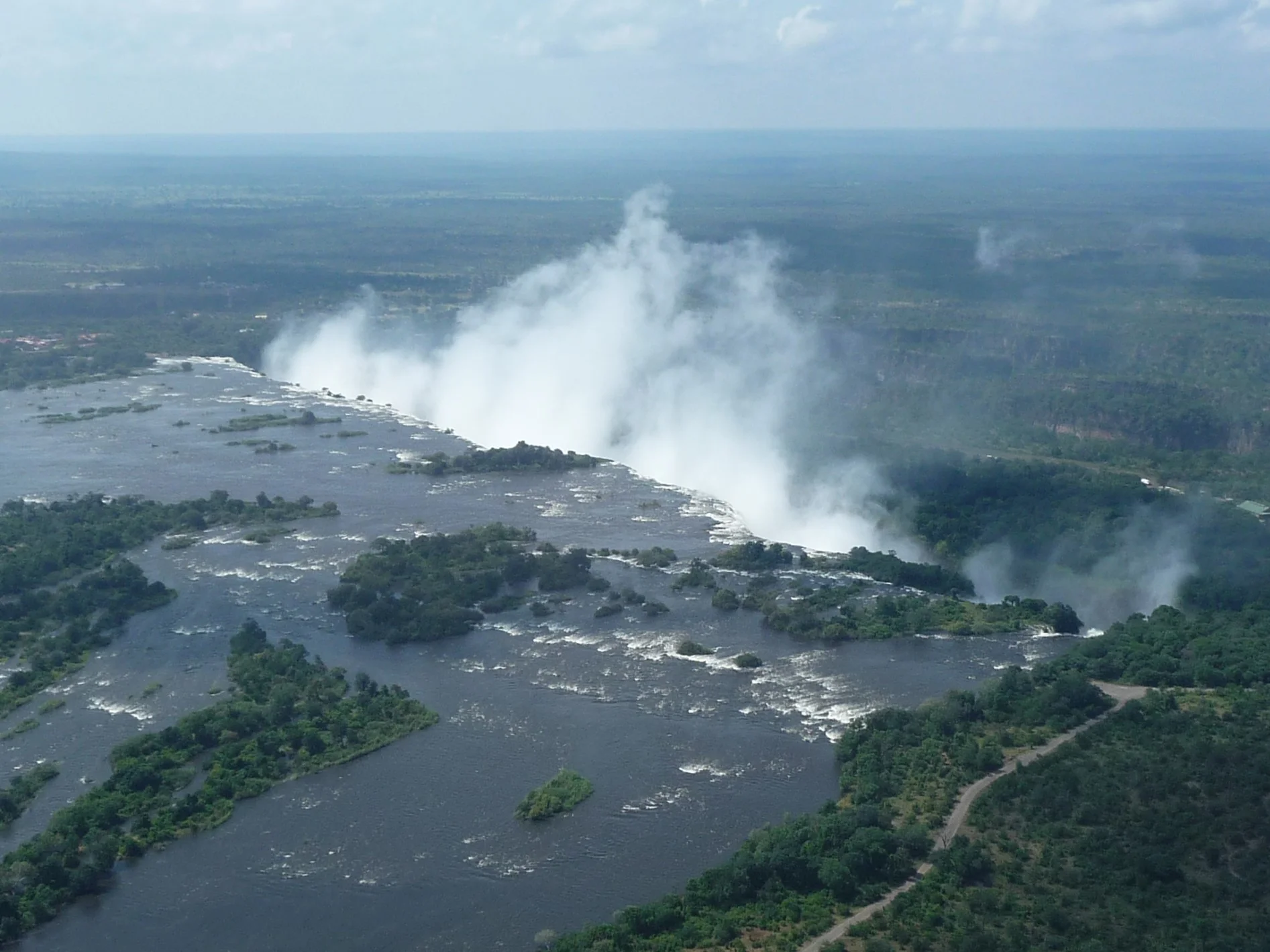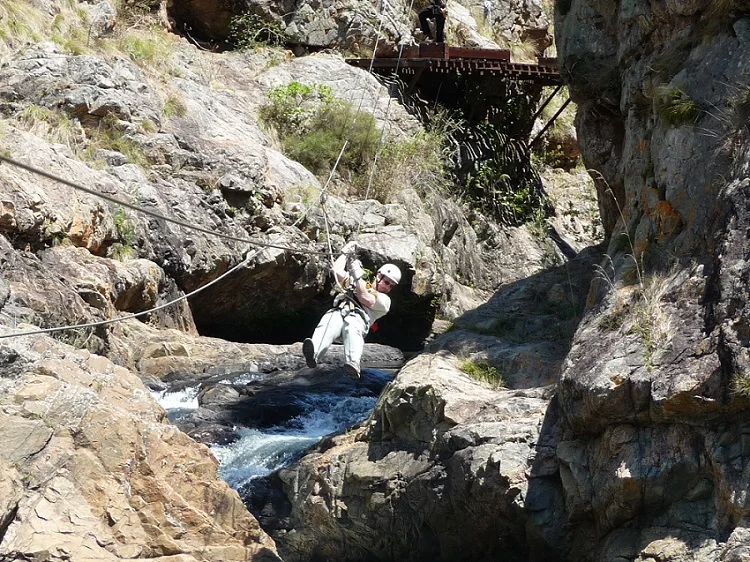Camping adventures in the wild at Mabuasehube Game Reserve
Lesholoago Pan – Mabuasehube Game Reserve – Botswana
Kgalagadi Transfrontier Park
Mabua Camping on the edge of a pan in the wilderness
Burnt vehicle from a few years back - long grass on middle island set alight
Travel to Mabuasehube
We woke early to pack up in the dark and head for the next part of our adventure in the wild. Packed up, on time, with our trailer hitched to our car, we were prepared for our next camping adventure. We were already in the park, having spent the previous two weeks at Polentswa and Rooiputs, as well as two nights at Nossob. Our plan was to leave at 7 am when the gates opened at Nossob.
We had a long journey ahead of us and knew it was going to be a real slog to get to our campsite at Lesholoago Pan, Mabuasehube Game Reserve which was in the extreme east of the Kgalagadi Transfrontier Park.
We were down to two couples for the last week of our Kgalagadi adventure. Our other friends didn’t have the luxury of being away from home and work for three weeks.
Alan, & Sue who planned and booked the entire trip were taking us to the far side of the park. They have an Iveco motorhome which is well kitted and easy to tour with and were ready ahead of us. They turned the key to start their motor, but the battery was dead.
Fortunately we could jump start them and just a few minutes after seven we were on our way. They also had an auxiliary battery which they could use in time of need, as it would not have been wise to travel into the wilderness with a dud battery and no backup.
One can travel in both directions on the Nossob to Bosobogolo trail - animal spoor in the road
Sign at Lesholoago pan
Nossob to Mabuasehube Game Reserve
Not far north outside the Nossob gate we left the gravel road and turned right onto a sand track over the dunes. We took the Nossob to Bosobogolo trail which allows traffic from both directions. The other track, which joins at the same point is a one-way route which only allows you to travel from east to west on the Malatso to Nossob trail.
The distance across the wilderness track is only about 220 kilometres but we knew it would take us most of the day. It would be a repetition of constant surging dunes with the odd stretch of flat areas. The dunes are not very high, but they can be deceptive. The sand itself is like beach sand but is finer. In my mind it must be similar to fesh fesh, often referred to in the Dakar rally, a fine powder. But then I’m not a rally driver…
We drove over the first dune without an issue because it was an easy incline. The second dune had a slightly steeper gradient. We were driving ahead of Sue and Alan and as we got to a fork close to the peak of the dune, we hesitated and lost momentum. Our vehicle ground to a halt. We were stuck.
Soft, powdery sand
Quick hot tips for sand driving
1: If you plan to do a trip like this, especially if you are towing, it would be a good idea to undergo training and learn the technique of driving in sand.
2: Deflate tyres sufficiently for driving in sand but bear in mind, the lower the tyre pressure, the higher the risk of damaging the tyre. It can even pop off the rim. It is also essential to have a tyre pressure gauge and portable air compressor.
3: Driving in sand, you need to keep the momentum going. Do not break rapidly or you could bog down and create a mound in front of the tyre.
4: Have a spade close at hand in case you need to dig yourself out of a hole or flatten the mound.
5: It is advisable to travel minimum of two vehicles on a route like this, especially in a wilderness area.
6: At least one of you should have some recovery gear in case of emergency.
Red Kalahari sand…
… to white rocks
4x4 off road driving
Back to our journey through the game reserve. That’s right, one where predators roam around freely. We could reverse but we couldn’t go forwards. We needed to dig ourselves out of this predicament.
But wait…there could be a wild animal lurking behind a bush… Before climbing out the car, we had a good look around to see if it was safe. We grabbed our spade and levelled the sand. Quite an adrenalin rush, I tell you, looking over your shoulder constantly in case you’re being stalked.
We also deflated our tyres even more, to 1.2 bar. Hubby casually said he’d see me at the top of the dune to lighten the load of the vehicle and make sure he gets to the top. Was he trying to tell me something?
He reversed slightly and churned his way up the dune. Armed with the spade, brandishing my weapon of choice (or necessity) in all directions, on high alert, because we’d seen lion spoor everywhere, I engaged my feet in 4x4 mode and sped up behind him in his tracks. Actually, it was more like plodding uphill.
After two weeks of camping already, maybe hubby was tired of me and wanted the tent all to himself. It looked like he was willing to offer me as lion fodder. Luckily our friends care about me. Alan and Sue who have done this trip numerous times, were behind us. They both hollered at me to get into their vehicle and made sure I was returned safely to my mortified husband. I forgave him; in the heat of the moment one forgets you should never leave your vehicle.
The third dune was trickier as the gradient was even steeper. A couple of meters from the top the sand bit and we bogged down again. We also seemed to have an issue that the 4-wheel drive didn’t want to engage. It took us three attempts to get over it, but we did, without needing to be towed over. Those were the only times we got stuck.
There are sneaky patches of soft sand with a very high island in the middle that we occasionally ploughed through with our jockey wheel, as it is quite low. Eventually we removed it, till we arrived at our campsite. We were so glad there weren’t any approaching vehicles meeting us head on at the apex of the dune.
For the distance we covered, we didn’t see many wild animals but we managed to see oryx (gemsbok), kudu, eland, steenbok, honey badger, a cobra and a tortoise. I’m sure the engine noise chased everything else away.
Gemsbok or Oryx
Nature calls – no, the other one..
There are no toilets along the way, except possibly at Matopi which is about halfway. Nothing like relieving yourself, protected by your vehicle on one side while scanning the terrain for approaching predators. What else could one do?
The only other time we stopped was for about twenty minutes for a quick lunch next to a pan. We saw no other vehicles the entire day until we reached the pans at Bosobogolo. The journey of approximately two hundred and twenty kilometres from Nossob to Lesholoago Pan took us nine and a half hours.
Naturally we were exhausted after a long day’s drive. While Sue cooked us a lovely meal and Alan heated the water for very welcome warm showers, we quickly pitched our tent and set up camp.
Kudu
The pans of Mabuasehube Game Reserve
Mabuasehube Game Reserve is in the Botswanan side of Kgalagadi’s north-eastern corner. It was part of the Botswana Gemsbok National Park in 1992. In 2000 the Kgalagadi Transfrontier Park (the South African side was known as Kalahari Gemsbok Park) was launched and the two parks amalgamated.
The Mabuasehube area consists of a cluster of pans where the animals roam: Bosobogolo, Monamodi, Mpayathutlwa, Khiding, Malatso, Mabuasehube, Mokgalo, Mogobewatihangwe and Lesholoago.
Each pan is at least ten kilometres apart and most of the pans have between two to 5 or six campsites.
Lesholoago Pan
Pan at Mabuasehube Game Reserve
The dots on the pan are animals
Our experience at Lesholoago Pan
Is it Lesholoago, Losoloago or Leshalogo? The sign as you reach the pan says Losoloago but elsewhere such as in the official park map it is spelled Lesholoago. It has also been spelt Losoloago.
Sunsets and sundowners
At night a golden blur of horizon separates the pans that melt into a pool of black, from the pastel sky until it turned into sparkling black velvet.
Watching the sun setting
Lesholoago Campsite 2 - campsite 1 is on the other side of the pan, to the right of the motorhome
There are only two campsites at Lesholoago, the most isolated of the pans. The closest campers, as the crow flies, were on the other side of the pan, approximately one kilometre away. If you took the road it would be 1.6 km. This was wild, remote camping. We loved it!
Each pan is different
Photos don’t do justice to the sheer size of the pans
Impressive landscape
From the time we reached Bosobogolo pan, the first one, till we arrived at Lesholoago I was smitten. Although the terrain to drive on was extremely rough at times where it varied from sand to stone, the vast pans were impressive. I needed a good camera and a good lens (and of course better photography skills). My little point and shoot camera didn’t do justice to the area. A good pair of binoculars was also necessary.
Inquisitive ground squirrel
Hornbill
Our routine followed much of the same as at Rooiputs and Polentswa. Ground squirrel, spurfowl, a lone guinea fowl and yellow beaked hornbills kept us entertained while we pottered around at camp.
While having coffee and rusks, the cheeky guinea fowl leapt up to steal the rusk from my hand before I could take a bite. On another occasion it actually stole a sandwich that was still toasting on a hot grid over the coals. I was fully expecting an encounter with a lion or leopard at the campsite, but a thieving guinea fowl?
Thieving guinea fowl
Ground squirrel collecting nesting material
Spurfowl
Ground squirrel love eating the yellow flowers
Cute to watch
Oryx on the Lesholoago Pan
Kudu behind the shrubs
Can you spot the kudu?
When we drove around, we explored the different pans. The terrain around the pans was quite dense and had much vegetation which made it difficult to see animals. That doesn’t mean they weren’t there.
There is a raised lookout point at the Mabuasehube pan. I jumped out to take some panoramic photos and felt quite safe because we had a good 360-degree view around us. Alan and Sue who were behind us saw lion spoor close to us. It didn’t take me long to get back into our vehicle.
Oryx or gemsbok love eating these cucumbers
A view point at one of the pans at Mabuasehube
Suricate or meerkat keeping watch
Namaqua sandgrouse
Tsamma melon
Campsites at Mpayathutlwa pan
Camping at Mabuasehube
We camped at Campsite 2 (KTLOS02) which is near a waterhole. Ours was very quiet and secluded. Each campsite has its own appeal. Some with nothing more than a tree or an A-frame providing much need shade. Others had water, generally quite brackish and not drinkable.
Campsite 2 Lesholoago
Lesholoago campsite 2
Pit toilets at Mabuasehube Game Reserve
Our campsite had a pit toilet in a brick building but I must admit I quite preferred the open-air toilet. We had a shower cubicle, with rusted and dilapidated pipes but there was running water at the basin which we had to heat ourselves. Our friends provided the shower bucket.
Some of the boreholes dry up when there hasn’t been sufficient rain, so one can never be sure if there will be water. The bin was clean and relatively empty on our site, although we never saw signs of a park attendant in all the time we were there.
One night we were the only campers at Lesholoago pan. That feeling of solitude is indescribable.
Another campsite at Mpayathutlwa
Campsites
Springbok
On high alert for predators
Wildlife at Mabuasehube
Although we were very attentive to predators around our campsite, it was far more open, so we should have seen them approaching easily. Eyes at night turned out to be hares and little steenbok.
We constantly saw spoor of big cats but they kept themselves hidden from us. We chatted to campers at other pans and some were lucky to see lion and leopard. We were not so fortunate.
We had good bird viewings at some of the pans and water holes, not that we’re birders, but we had experts with us. Some of the birds we saw were lappet-faced vultures, white backed vultures, hooded vultures, bateleurs, tawny eagles, korhaan, Kori bustard, shaft tailed whydahs, ant-eating chat, capped wheatear, crimson breasted shrike, Namaqua dove, Namaqua sandgrouse. There was always something to see.
It seems this was a trip to see hyaena. Brown hyaena came to drink at Lesholoago waterhole twice and then walked through our camp. Early one morning when it was still dark, a spotted hyaena howled close by and drank water out of the bucket that we’d left out that night.
We saw many other antelope such as oryx (gemsbok), wildebeest, red hartebeest, springbok and various other smaller antelope.
On guard
Weather at Mabuasehube
The weather was kind to us, considering it was the latter part of May and winter was approaching. Some days were quite windy but hot. The evenings were cold and some mornings were rather crisp.
Where is Mabuasehube
Sanparks map of the Kgalagadi Transfrontier Park
Google Maps:
On Google maps it says 200 km will take you 12 hours and 11 minutes. Maybe they were a tad generous with their time. It took us approximately 9 and a half hours which is still a long time. We left Nossob at 7 am and arrived at Lesholoago at 4.30 pm. Bear in mind that you are not supposed to drive in the dark.
Wear and tear on our vehicle
Driving a 4x4 vehicle in off-road or 4-wheel drive conditions takes its toll.
Continuous driving of about 9 hours on rough terrain does some damage to the vehicle. It doesn’t allow time for certain parts to cool down and the wear and tear on the vehicle must be quite considerable. In our opinion it is better to break down the trip into shorter sections where possible. Our front shock absorbers were virtually non-existent.
The bracket of our auxiliary battery came loose – we suspect it was because of our shock absorbers.
One of our spotlights rattled loose over the dune road from Nossob to Mabuasehube. It was hanging on by the wire. Good old duct tape fixed it.
Tyres were shredded – but the Kgalagadi Transfrontier Park can’t get all the blame for that, as we’d done many kilometres on them over the last few years. The roads inside and outside the park aggravated it and we changed them after the trip.
Dust gets in everywhere; and I mean everywhere, even into the tiniest of holes. When the wind blows, it is even worse. Our vehicle needed a good scrub and polish.
Having said that, we don’t regret having done the trip at all. After all, if you love adventure you have to pay the price.
At least it was still attached
Videos
Unfortunately I cannot show you any videos that I took of exhilarating moments with predators walking through our campsite. Maybe it was because we camped near a waterhole, but here are a few that other photographers have taken over the years.
Related Posts:
What you need to know about Kgalagadi Transfrontier Park
What you can experience in the Kgalagadi
How to prepare for off the grid camping in Kgalagadi
Itinerary and route to Kgalagadi Transfrontier Park
High jinks of a jackal at Rooiputs campsite Kgalagadi Botswana
Why it is worth spending time at Polentswa waterhole
How to be on high alert for predators at Polentswa Kgalagadi
Step by step instructions on how to leave a comment on my blog:
Type in your comment in the comment box.
Click ‘Post Comment’
Briefly a message should appear saying you are not logged in, then a box with ‘Post a Comment’ will appear for you to complete with your name, email address and website URL (if you have one).
Fill in your first name and email address in the appropriate section. (Your email will not be made public and will not be used for any other purpose than for you to get a notification of a reply to your comment.)
Click ‘Comment as Guest’ and you’re good to go!
To subscribe to my blogs, please fill out the SUBSCRIBE form.
Thank you.
I know it is quite a process, but it helps keep our websites secure. Your email address will not be shared or displayed.
























































Verlorenkloof is situated on the Welgedacht Farm near Lydenburg and is a home away from home. What is it’s attraction?